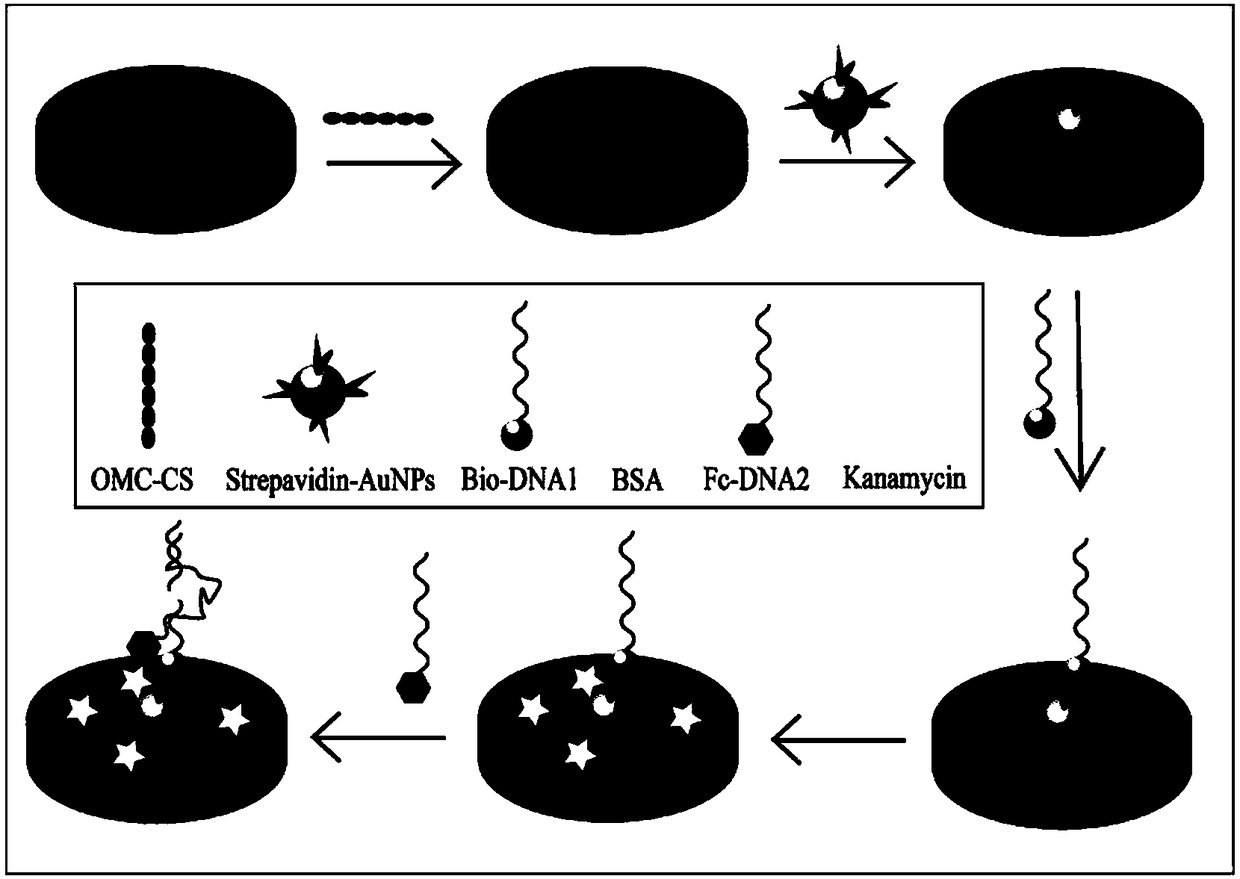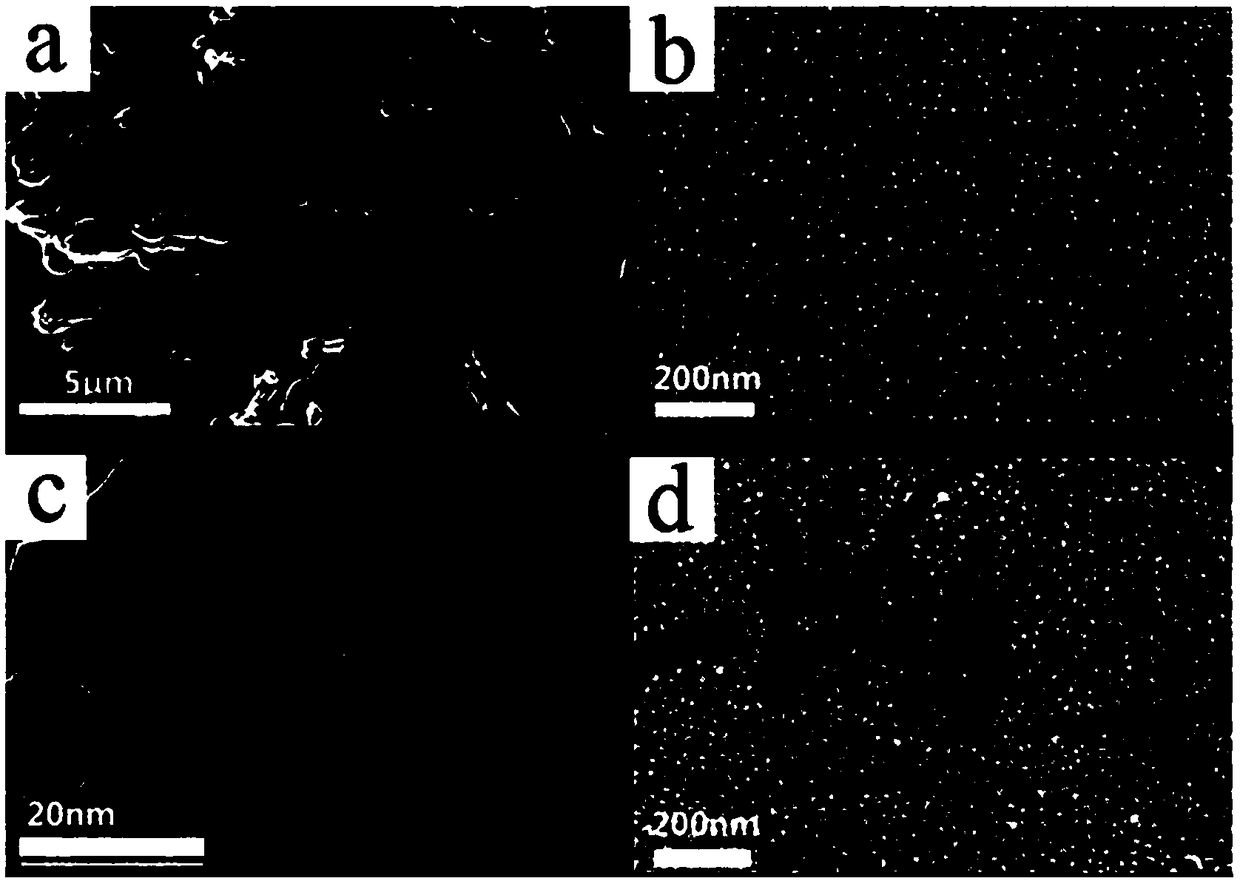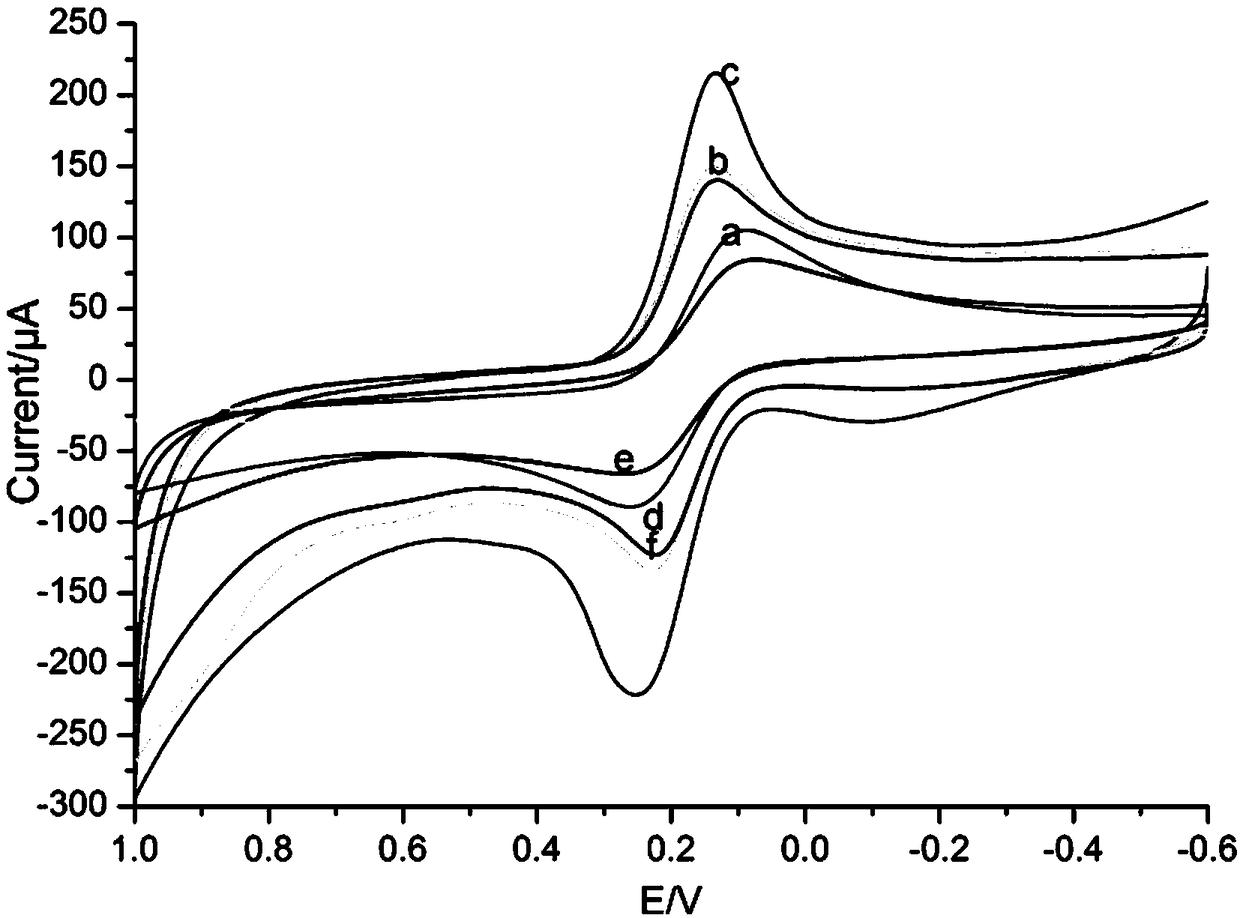Preparation method of aptamer sensor for detecting residual kanamycin in milk
An aptamer sensor and kanamycin technology, applied in the field of biosensors, can solve the problems of long turnaround time, expensive equipment, cumbersome sample pretreatment, etc.
- Summary
- Abstract
- Description
- Claims
- Application Information
AI Technical Summary
Problems solved by technology
Method used
Image
Examples
Embodiment
[0025] Example: such as figure 2 As shown, the morphology of OMC-CS and SA-AuNPs composites were characterized by SEM and TEM, respectively, figure 2 (a) shows that OMC-CS is composed of a large number of rod-like particles uniformly and orderly distributed, which makes OMC-CS have high porosity and high surface area, providing a better protective microenvironment for aptamers; SEM image of SA-AuNPs ( figure 2 (b)) showing the separation of AuNPs particles from each other in the presence of streptavidin molecules; as figure 2 As shown in (c), AuNPs particles were successfully labeled with streptomycin; when biotin was added, AuNPs particles aggregated under the high-affinity interaction between streptavidin and biotin groups ( figure 2 (d)).
[0026] Example: use CV to characterize the construction process of the aptasensor ( image 3 ), due to the probe ([Fe(CN) 6 ] 4- / 3- ), the CV of bare GCE shows a pair of well-symmetrical redox peaks (curve a); due to the high ...
PUM
 Login to View More
Login to View More Abstract
Description
Claims
Application Information
 Login to View More
Login to View More - R&D
- Intellectual Property
- Life Sciences
- Materials
- Tech Scout
- Unparalleled Data Quality
- Higher Quality Content
- 60% Fewer Hallucinations
Browse by: Latest US Patents, China's latest patents, Technical Efficacy Thesaurus, Application Domain, Technology Topic, Popular Technical Reports.
© 2025 PatSnap. All rights reserved.Legal|Privacy policy|Modern Slavery Act Transparency Statement|Sitemap|About US| Contact US: help@patsnap.com



